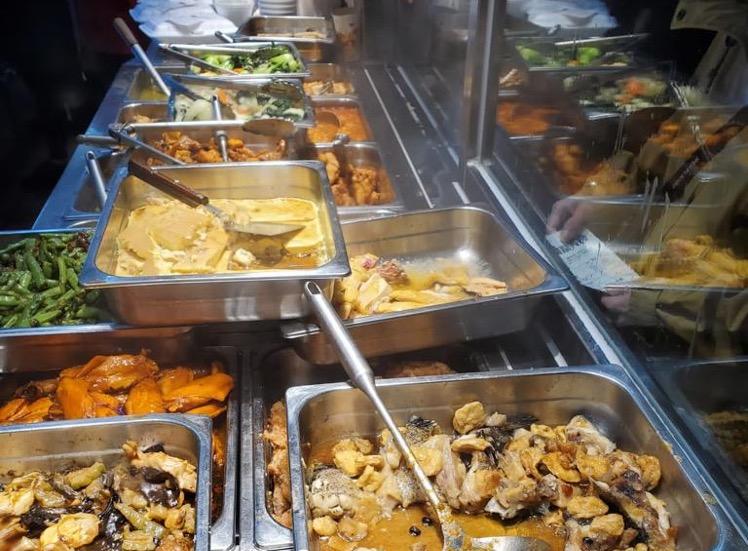
Food Safety Focus (188th Issue, March 2022) – Article 2
How to Serve ‘Rice with Two Sides’ Safe?
Reported by Ms. Rita OSBORN, Chief Health Inspector,
Risk Communication Section, Centre for Food Safety
The COVID-19 pandemic is reshaping how food is prepared and served. While eating in may not be feasible in certain situations, some prefer takeaways. ‘Rice with two sides’ providing Hong Kong-style dishes at affordable prices are increasingly popular. Customers can choose any combination of two side dishes from over a dozen of hot dishes which are served with a generous amount of rice. For food businesses that display these precooked dishes, it is critical to keep the food safe from contamination and at the proper temperature.
General Characteristics of 'Rice with Two Sides’
Commonly known as ‘rice with two sides’ to locals, these precooked dishes are nowadays readily available at restaurants, fast-food outlets, campus or staff canteens, supermarkets and food stands. These Hong Kong-style savoury dishes come in wide-ranging varieties, stored and displayed in containers for diners to select. To cater for operational needs, food business operators (FBOs) who serve ‘rice with two sides’ tend to prepare precooked dishes in large quantities in advance for later reheating and display at the food counter. Consequently, these practices involve two key risk factors for food poisoning: preparing cooked food too far in advance and keeping food at an incorrect hot-holding temperature.
Keep Hot Food Hot
Food held at the Temperature Danger Zone between 4°C and 60°C encourages germs to grow rapidly. After cooking, the food if not served immediately must be kept at a safe temperature to safeguard customers. Hot food must be kept at above 60°C.
In the foodservice industry, a bain marie, wet or electronic, is often used to keep prepared food warm. Some FBOs may put food in a bain marie at a temperature lower than 60°C, say 45°C, such that the food does not dry out quickly. This practice of keeping the food at the Temperature Danger Zone allows harmful bacteria to proliferate. Therefore, FBOs should constantly monitor and ensure that food is stored at above 60°C. Food should be displayed as shortly as possible and customers be reminded to consume the food as soon as possible after purchase. To facilitate reaching the desirable temperature, hot-holding containers can be preheated before using them to hold food. It is also not advisable to refill food by combining newly cooked food with remaining food that has already been displayed for a period of time.

Figure 2. Bain marie trays not properly set may keep precooked food at unsafe temperature.
Safe Food Preparation in Advance
FBOs should always plan ahead to avoid preparing food too far in advance. Dishes that take a longer time to cook, such as stew meat, are commonly made a day earlier and require refrigeration before selling them the next day. Prepared food should be quickly chilled in a blast chiller (e.g. to 4°C in 1.5 hours). Alternatively, the food could be cooled down stepwise – cooling to 20°C within two hours, and then to 4°C within the next four hours or less. These techniques reduce bacterial growth during cooling. Using wide, shallow containers or reducing the portion size speeds up chilling. The food should also be well covered to prevent cross-contamination during storage. Before serving these refrigerated prepared food, the food should be thoroughly reheated with core temperature reaching at least 75°C. On a related note, bain marie should be used only for keeping thoroughly cooked and reheated food hot. Never rely on a bain marie to reheat refrigerated food.
Advice to Consumers
Consumers are advised to eat takeaway food as soon as feasible. Alternatively, they should store it in a refrigerator temporarily and reheat it thoroughly before consumption. Customers should stay alert to the risks involved and adhere to the ‘Five Keys to Food Safety’.
From a healthy eating point of view, consumers may choose dishes with low salt, more vegetables and less meat when ordering takeout. Request soy sauce or other condiments to be served separately whenever feasible, and taste before adding them.


